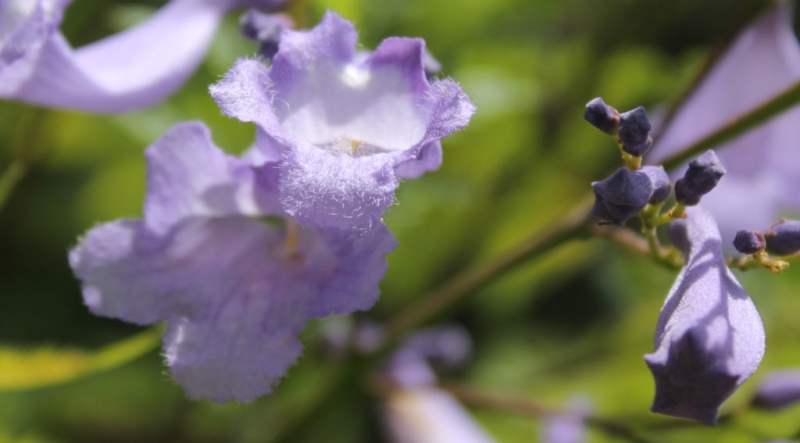November 10 - 16, 2013: Issue 136
Australian Water Dragons of Pittwater:
Esturine Spring 2013 Flowers

Physignathus lesueurii lesueurii, the Eastern Water Dragon. Photographed in Careel Creek 31.10.2013. Picture by A J Guesdon.
Australian Eastern Water Dragons of Pittwater Among Estuarine Edge Flowers – Spring 2013
A Koel has taken up residence in the Norfolk Pin alongside our yard and calls morning and at dusk to all around. This herald of Spring and Summer draws the eyes to all these other small signs of the natural world bursting at water edge with mangrove flowerings, tiny yellow …. At waters edge too, and when you gaze upwards, Banksia aemula, the lilac bells of Jacaranda and the brightness of bottlebrushes fill the trees and cascade to make a petal carpet for your feet.

Among these waterside rushes and sedge plants are adult Australian water dragons (Physignathus lesueurii). It is currently water dragon breeding season so you may see a few more out and about, especially closer to our creeks and waterways. October, November and December is when they lay their eggs (10-20 per Nest) in nests that are moist and usually within vegetation that is rotting. The young will hatch in January and February.
Their nest are typically constructed in sandy or soft soils in an areas open to sun. When the mother has laid her eggs, she backfills the chamber with soil and scatters loose debris over it. Australian water dragons exhibit temperature dependant sex determination; the sex of the hatchlings is determined by the temperature of the nest site.
When the young are born they stay near the entrance of the burrow for some time before leaving home. When they finally leave the nest, they tend to group together away from the adult population.
Those we see in Pittwater are able to swim totally submerged, and rest on the bottom of our shallow creeks for up to 90 minutes to avoid detection. Both males and females display typical agamid (‘agamid’ = lizard - relatively long-bodied reptile with usually two pairs of legs and a tapering tail from New Latin, fr. Agama, type genus + -idae.) behaviour such as basking, arm-waving and head-bobbing. Fast arm-waving signals dominance, while slow arm-waving signals submission. Males are territorial, and in areas of higher population density, males exhibit displays of aggression toward other males including posturing and chasing.
Australian water dragons have long powerful limbs and claws for climbing, a long muscular laterally-compressed tail for swimming, and prominent nuchal and vertebral crests. (A nuchal crest is a central row of spikes at the base of the head. These spikes continue down the spine, getting smaller as they reach the base of the tail.)
Including their tails, which comprise about two-thirds of their total length, adult females grow to about 60 cm (2 feet) long, and adult males can grow slightly longer than one metre (3 feet) and weigh about 1 kg. Males show bolder colouration and have larger heads than females. Colour is less distinct in juveniles.
The Australian water dragon is the only species of the genus Physignathus in Australia.
There are two subspecies; Physignathus lesueurii lesueurii (eastern water dragon) and the Gippsland P. l. howitti (Gippsland water dragon). P. l. lesueurii tends towards white, yellow and red on the throat and possesses a dark band behind its eye; P. l. howitti lacks this and instead has dark bands on either side of its throat, which is blotched with yellow, orange, or blue. Both subspecies are light greenish grey in overall colour with black bands running across their back, tail and legs.
Our water dragons are prey to snakes, cats, dogs and foxes. Nestlings and smaller juvenile water dragons are preyed upon by kookaburras, currawongs, butcherbirds and other carnivorous birds. They are also prone to becoming hit by vehicles due to the attraction of warm bitumen and concrete for basking.
The Eastern Water Dragon's diet depends on its size. Juveniles and yearlings tend to feed on small insects such as ants, spiders, crickets, and caterpillars. When they get bigger, so does their prey. An adult diet includes small rodents such as baby mice, although insects are still the most commonly consumed.
Although active all year round they will become a little slower during winter and hibernate.
Australian water dragons are extremely shy in the wild, but readily adapt to continual human presence in suburban parks and gardens. They are fast runners and strong climbers. When faced with a potential predator, they seek cover in thick vegetation, or drop from an overhanging branch into water.
Reference:
Australian water dragon. (2013, October 14). In Wikipedia, The Free Encyclopedia. Retrieved from http://en.wikipedia.org/w/index.php?title=Australian_water_dragon&oldid=577100396


Mangroves are flowering at present. Picture by A J Guesdon, 2013.

Banksia aemula. Picture by A J Guesdon, October, 2013.
